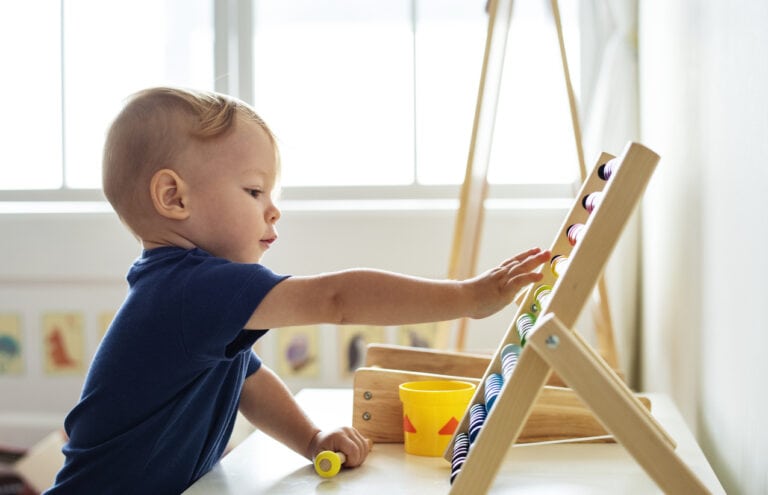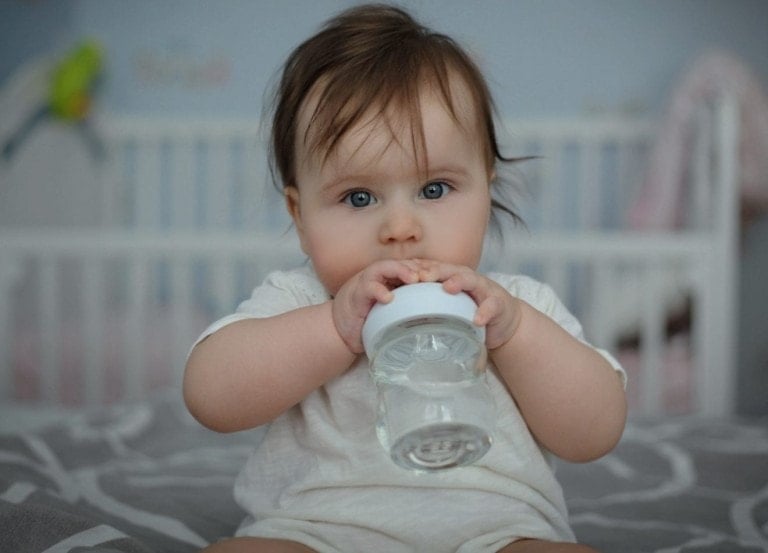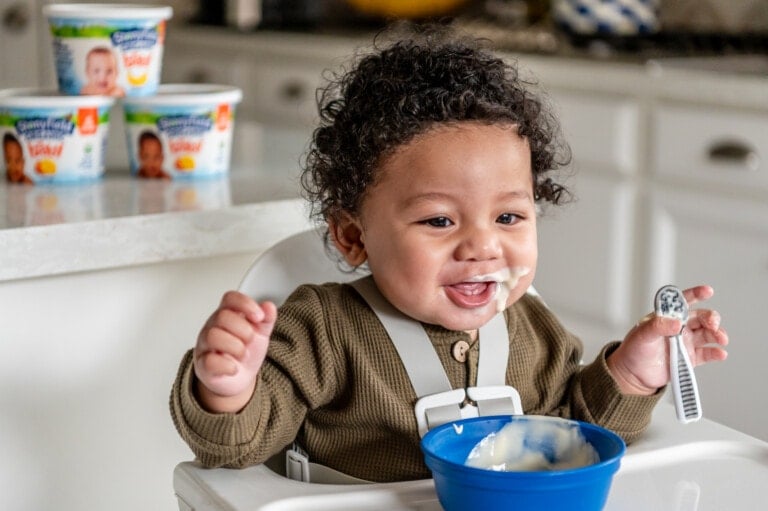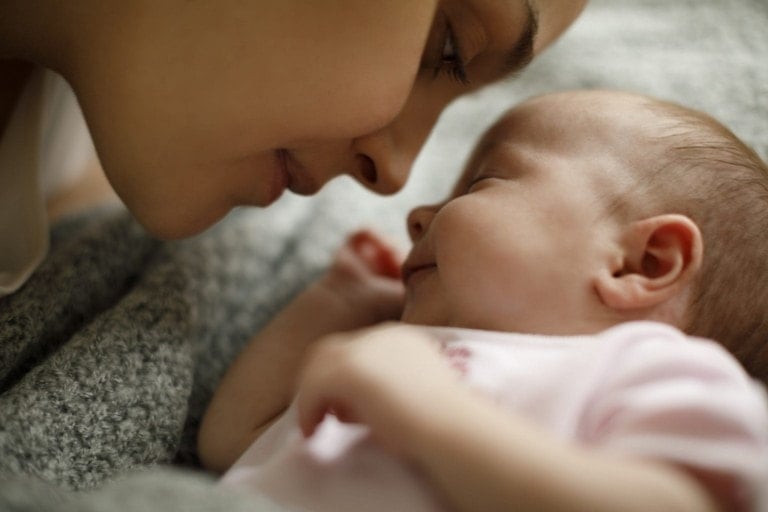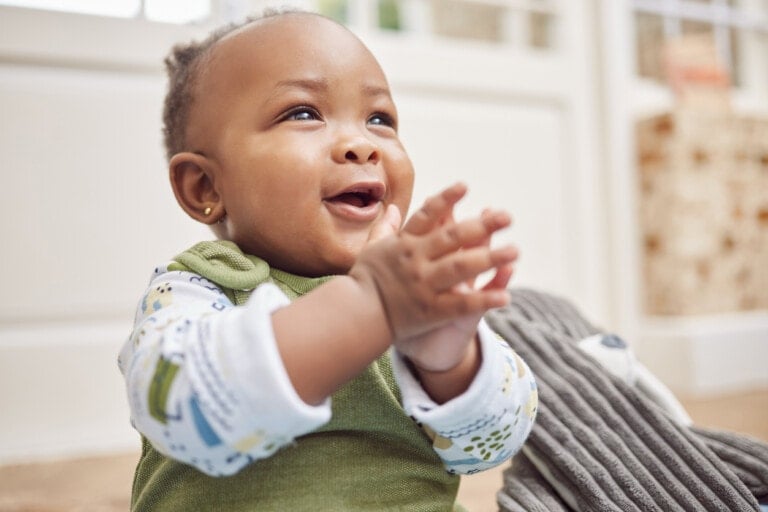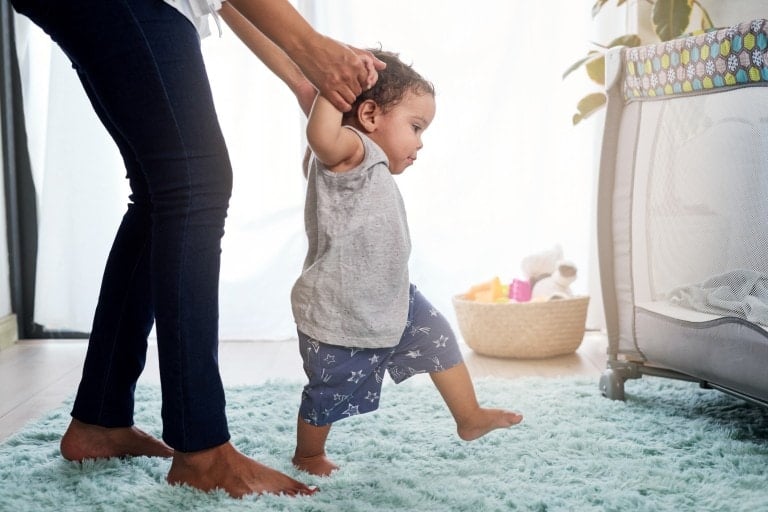Reaching two months old is a significant milestone not only for your baby but also for you as a parent. You have survived the first months home with a newborn, and you are starting to grow your parenting legs. With each new month, you may wonder what comes next in your baby’s growth and development. This article will help you understand the new 2-month-old milestones they will achieve, how much they should eat and sleep, and what activities you can do with a 2-month-old.
2-Month Developmental Milestones
Each month, your baby will learn more and more skills, propelling them along their developmental path. As your 2-month-old grows, these are some of the developmental milestones they should be reaching:1
- Holding their head up when on their tummy
- Moving both arms and legs equally
- Briefly opening and closing their hands
- Watching others as they move or walk around
- Focusing on your face or a toy for several seconds
- Making sounds other than crying, such as cooing
- Calming down when talked to or when picked up
- Smiling at you when you talk or smile at them
- Responding to loud noises
2-Month-Old Feeding Schedule
At the 2-month-old milestone mark, your baby will start to have a more predictable feeding schedule than they did as a newborn. They will still eat every two to four hours during the day, but it will be more predictable and can include a longer stretch between feedings at night. 2-month-olds typically eat 4 to 5 ounces of formula or breast milk with each feeding.2
Signs of Hunger
For most 2-month-old babies, their hunger cues are similar to that of a newborn. These include:3
- Putting their hands to their mouth repeatedly
- Turning their head toward the breast or bottle nipple
- Puckering, smacking, or licking their lips
- Clenching their hands
Many babies will cry when they are hungry, but this is also a late sign of hunger. As your baby grows at the 2-month-old milestone, you will become better able to recognize their hunger cues to avoid reaching this late-stage hunger cue.3
Signs of Fullness
While your baby has started to space out the length between their feedings, it is essential to monitor them for signs of fullness and for signs that they are getting enough to eat. Some signs of fullness include:3
- Closing their mouth when presented with the breast or bottle nipple
- Turning their head away from the breast or bottle nipple
- Pushing the breast or bottle away
- Relaxing their hands
Your newborn will feed more frequently when they are going through a growth spurt, and it can be hard to know if they are getting enough to eat. The best way to determine this is to check their diaper. Your baby should have a minimum of five to six wet diapers a day and poop on a regular schedule. Some babies will poop several times a day, while others may go a few days in between poops. As long as your baby is having their normal number of wet and poopy diapers a day and gaining weight appropriately, you know they are getting enough to eat.2
2-Month-Old Sleep Schedule
Many parents ask, “When do babies start sleeping through the night?” and for most babies, that will not happen until around three months or later. Sleeping through the night is typically seen as sleeping for six to eight hours without waking. Babies under three months of age cannot go that long in between feedings, so waking up during the night is expected.4
As your baby grows out of the newborn stage, they will develop a new sleep schedule. Most babies at the 2-month-old milestone will sleep about 14-17 hours a day, split into two to three daytime naps and a longer stretch of sleep at night.5 Many breastfed babies can sleep four to five hours in between feedings at night, while many formula-fed babies will sleep five to six hours in between nighttime feedings.6 Don’t be alarmed if your baby wakes more frequently throughout the night than is expected; it is completely normal for a 2-month-old to wake multiple times a night as they continue to develop their sleep schedule.
Even though your 2-month-old will start to have a more predictable sleep schedule, some babies will still struggle or only sleep when held. To help your baby adjust to sleeping in their crib, try putting them down in their crib just before they fall asleep. This will help them adjust to sleeping without being held.11
Daily Schedule
Even at two months, your baby’s daily schedule is dictated mainly by their nap and feeding schedule. Their feeding and sleeping schedule may be more predictable than it was as a newborn, but that doesn’t mean they will stick to a strict schedule. Trying to have a strict daily schedule can lead to stress and frustration. Your baby’s preferred sleep or feeding times may change daily as they grow, and that’s okay!
What To Expect at Your 2-Month Well-Child Visit
At their 2-month-old milestone, your baby will have a well-child visit with their pediatrician. At this visit, your pediatrician will monitor their weight gain, perform a physical and developmental exam, and discuss any immunizations your child may need.7
Monitoring your baby’s weight will be a primary focus during these well-child visits. While many parents want to know the average weight for a 2-month-old, that is a difficult number to nail. Every baby is born at a different rate and will have their growth patterns. Most babies will gain about 1 ounce daily, but that can vary. Your doctor will monitor your baby’s weight to make sure they are growing at a steady rate.13
Many parents have heard of the two-month vaccines but may be unfamiliar with what vaccines those are. The vaccines a baby receives at two months old include:8
- Hepatitis B vaccine
- Rotavirus vaccine
- Diphtheria, tetanus, pertussis vaccine (DTaP)
- Haemophilus influenza type B vaccine (Hib)
- Pneumococcal vaccine
- Inactivate polio vaccine
Concerns to Mention to the Doctor
While this may seem like a ton of vaccines to receive simultaneously, it is perfectly safe for your baby to receive these at their 2-month-old milestone visit. Many of these vaccines are combined to reduce the amount of shots needed and are typically given in three intramuscular shots (usually the thigh) and one as an oral vaccine. Please speak with your doctor if you have any questions or concerns regarding the vaccines your baby may receive.8
Your baby’s well-child visit is the perfect time to bring up any concerns you may have about their feeding, development, or overall health. Some concerns you would want to notify your pediatrician about are:9
- Your baby is having trouble feeding or is not able to eat enough
- They don’t react to loud noises
- They aren’t able to follow objects or faces with their eyes
- They seem stiff or floppy in their arms, legs, or both
Health Concerns to Watch Out For
Young babies are more susceptible to illness because their immune systems have not had the time to develop fully. Some common illnesses you will want to watch for in your baby include:7
- Diarrhea or vomiting that causes dehydration
- Increased irritability that is accompanied by a fever or rash
- Skin irritations
- Respiratory infections such as a cold
- A fever over 100.4 degrees Fahrenheit, which is not common and indicates that your baby needs to be seen immediately by their doctor
Activities for 2-Month-Olds
As your baby enters their second month, they will be more awake. A 2-month-old’s wake window can be as long as two hours.12 This longer period awake will give you and your 2-month-old plenty of time to work on their developmental milestones. Some fun activities you can do with your baby include:1
- Shaking a rattle next to their head and seeing if they look for the sound
- Mimicking your baby’s sounds
- Having your baby look at themselves in the mirror
- Encouraging supervised tummy time with toys at eye level in front of them
- Talking to your baby as you feed, change, and bathe them
- Cuddling and holding your baby
Safety Tips
Having a newborn and keeping them safe from danger can seem overwhelming. At this age, babies cannot move around by themselves, but that doesn’t mean there aren’t safety measures that need to be implemented. At this age, safety is geared toward keeping the environment around your baby safe. This can include:10
- Not drinking hot liquids while holding your baby
- Using a playpen to keep them in a safe area
- Not using baby walkers
- Use toys that do not come apart, don’t have sharp edges, or aren’t smaller than your baby’s mouth
- Setting your water heater to less than 120 degrees Fahrenheit
- Not leaving your baby unattended with siblings or pets
- Not leaving your baby alone in a place where they can fall, like a couch or bed
The second month of your baby’s life is filled with growth. It is such a fun time watching them meet their 2-month-old milestones, thrive, and develop new daily skills. Your baby has grown much over the first months of their life, and some of the most exciting parts are yet to come!

























